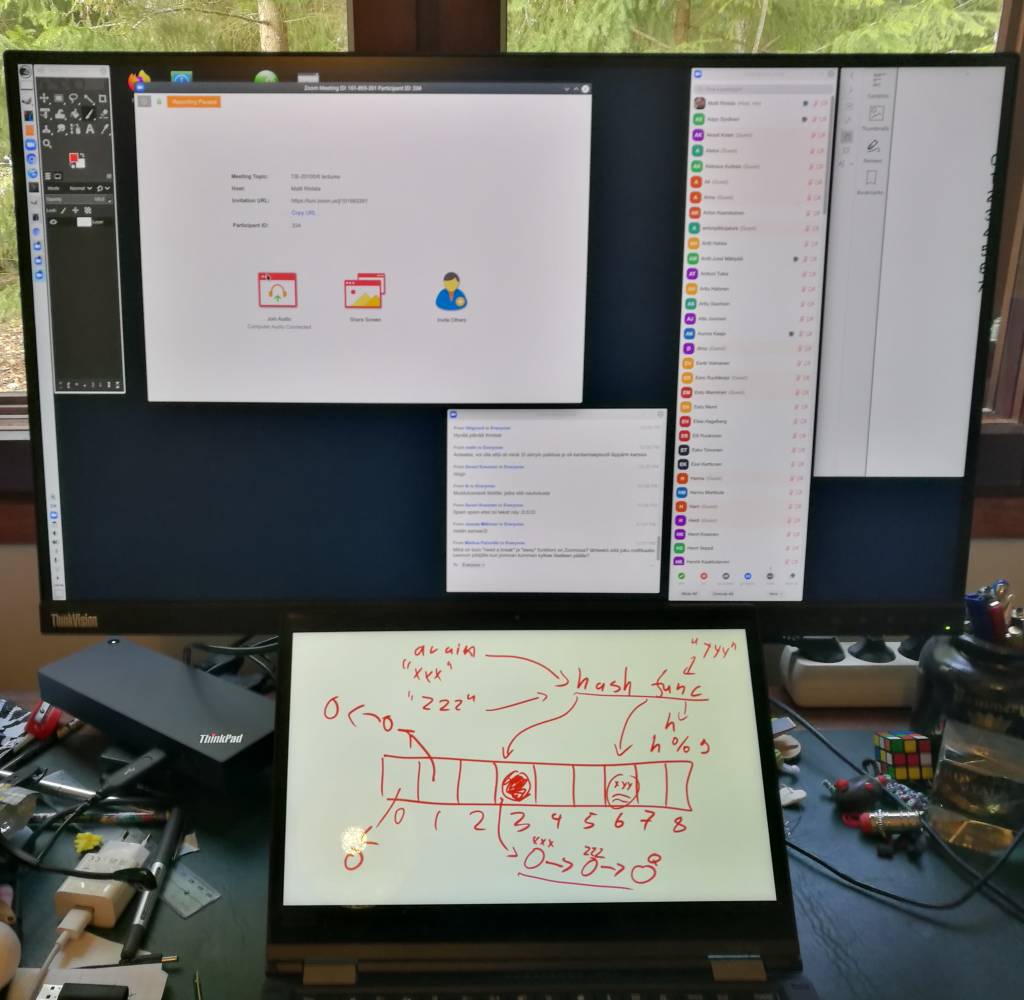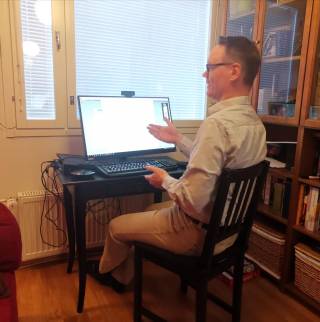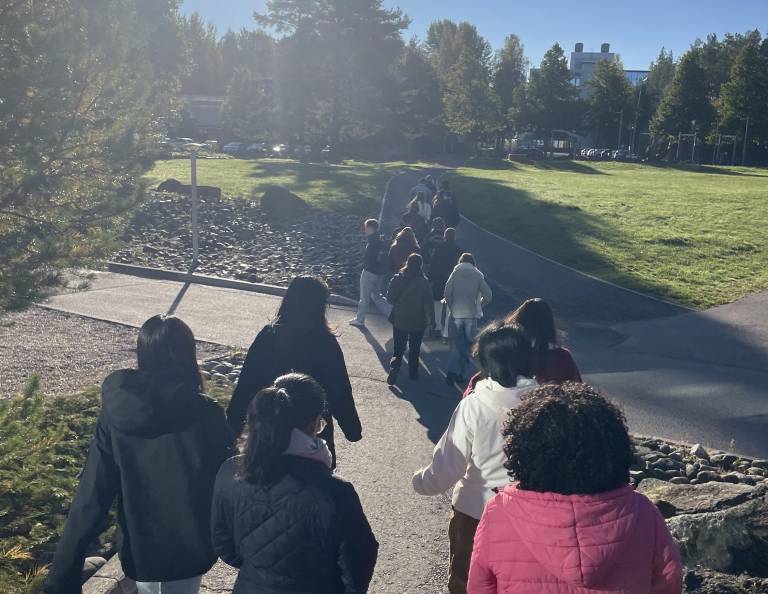
Basic course takes the leap
In Programming 2, a large basic course on programming, moving to remote teaching caused a lot stir and hurry, but at the moment everything goes fine. As the very first action, all deadlines of the course were postponed by a week, which also decreased pressure on course staff as well as gave the students time to adjust. Now, the first lecture videos have been recorded with Zoom. The aim is to produce only short videos with one shot on the most important topics of the course, instead of whole 90 minutes lectures. Zoom has been used also in exercise hours, students can participate in them, but they are also recorded. Therefore, it is sufficient to have only one exercise hour per week. Moreover, Zoom is suitable for Kooditorio, too, better than expected, and queuing can be done with Google Docs. Last but not least, very many POP messages have been sent, especially at the beginning. After all, many new things have been learnt, and at least some of them can be usable in normal situations, too.
Lecturing online with 300 students
The basic course in signal processing, with its over 300 enrolled students was also faced with a rapid move to remote lectures and exercises. Traditionally, the course was implemented as a mixture of lectures and classical weekly exercises; with both pen-and-paper and computer exercises. The greatest challenge was how to move 25 weekly exercise groups out of physical classrooms in two days. In just less than three working days, the course had discovered a protocol for implementing everything online—with the principle that everything should resemble the corresponding actions in a normal classroom setting. We wanted to follow the classroom procedures as closely as possible, since the intention is not to design a full remote course in two days, but rather to transform the existing course to an online platform with minimal damage.

Now, both the lectures and exercise sessions are executed in Zoom. Students present their pen-and-paper solutions to the public on a shared screen, after which the assistants evaluate their Matlab exercises on a shared screen inside a private breakout room. The transition has been surprisingly well accepted by the students—some even appreciate the remote exercises better compared to conventional ones. On the other hand, the first weeks of remote execution of a conventional course have proven significantly more demanding in terms of the workload of both the lecturer and the teaching assistants: although modern platforms such as Zoom do operate smoothly, the teachers need to pay attention to technical details at the same time as the actual pedagogy, thus making everything slightly slower and more demanding. And, one thing that the teacher misses the most is something that can’t easily be substituted in the home office: a blackboard of decent size. Polling suggests the move has been successful. The students gave an average grade of 3,8 (1= poor, 5 = excellent) to the lectures and a 3,35 grade on average to the exercises in Zoom.

Partially online goes entirely online
Data Strucuters and Algorithms -course also has approximately 300 students so work was needed to make the final move to remote teaching. Here the move was a bit less of a radical one as luckily a lot of the arrangements had already been made to support remote learning. The guiding principle was that the course is changed as little as possible but all physical contact teaching in transformed into online contact teaching.
Arranging the lectures using the Zoom-platform went brilliantly: the lecture of 135 participants worked nicely, the amount of participants was equal to normal and almost the same amount of discussion took place as before. The weekly exercises were similarly moved to Zoom where the virtual breakout rooms allow a similar working mode as is in use under normal circumstances. Finally, giving help with the course project was tried using Zoom as a virtual Coditorium (“Zoomitorium”) and even that ended up working fine even though a little bit of juggling was needed with the limitations of Zoom.
In addition help has been available through email and the Mattermost chat as usual. Turning in the course projects was done through Git/GitLab and the Plussa platform even before the leap so no changes were needed there. All in all one can say that the only major change on the course because of the novel corona virus outbreak has probably been that the students have started working on the course project many days earlier than before as their spare time options have become more limited. 😉
Text by: Matti Rintala, Heikki Huttunen and Maarit Harsu




